You may not know about Niushou Mountain when traveling to Nanjing, but I suggest you go
Niushou Mountain is located in Jiangning District, the southernmost tip of Nanjing City. It is named because the two peaks facing each other on the top of the mountain are like the two horns of Niutou, so it is also called Niushou Mountain by people. A painting of Fansha in Jinling from the Ming Dynasty depicts the scenic scenery of Niushou Mountain during its prosperous period.

Niushou Mountain is famous for its strong Buddhist cultural atmosphere. Throughout dynasties, civil engineering and temples have been built here. After the Japanese invaders occupied Nanjing, they set fire to all the temple buildings on the mountain, turning the past scenery to ashes.
During the Twelfth Five-Year Plan period, the construction of Niushou Mountain Cultural Tourism Zone was listed as a key cultural construction project in Nanjing City. On October 27, 2015, the Sakyamuni Buddha's crown bone relic was officially enshrined in the Niushou Mountain Buddha's crown palace, and the Niushou Mountain Cultural Tourism Zone was officially opened.

On June 12, 2010, the real relic of the top bone of Sakyamuni Buddha was unearthed at the Da Baoen Temple in Nanjing. According to strict historical research, this is the only surviving relic of the real body of Sakyamuni Buddha in the world. Relic refers to the remains and bead-shaped jewel-like objects left behind by the death and cremation of a Buddha or an eminent monk. Among the relics, the real relic of Sakyamuni Buddha is the highest priority. In order to permanently house the sacred relics of the Buddhist realm, Niushou Mountain Cultural Tourism Zone built a splendid Buddha Top Palace and Buddha Top Tower on the west peak of Niushou Mountain.



Due to mining, the Xifeng top of Niushou Mountain has been leveled and a huge mine pit has been left. The Fuding Palace was built using the left mine pits. It has six floors underground and three floors above ground. It consists of three major spaces: the Zen Temple, the relics hall and the relics collection palace.

The Fuding Palace building has the theme of sacrifice and is divided into two parts: a large dome and a large dome, which means external support and internal support. The large dome is 120 meters long and is shaped like a Buddha's cassock. It not only echoes the Niushou East Peak, but also covers the small dome of the underground palace. Above, symbolizing the Buddha's infinite blessings. The whole small dome is like a Buddha's hair bun, and the individual is shaped by hands folded together, implying the support of millions of believers to the Buddha.
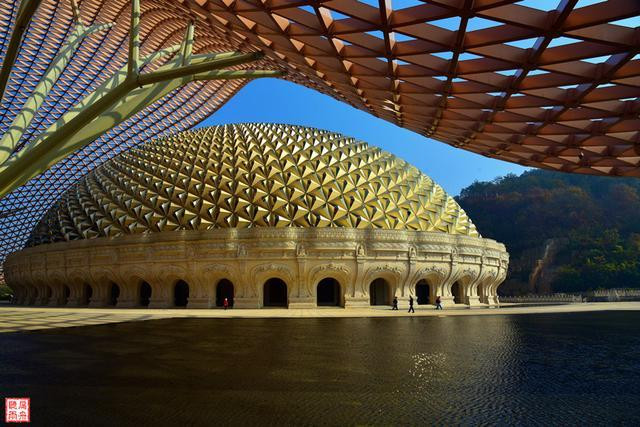

The base of the small dome is in the shape of a lotus throne. The entire lotus throne consists of 56 flying Bodhi doors symbolizing the infinite wisdom of the Buddha, and 56 cloud door Ruyi pillars symbolizing good luck. They are combined with the small dome Mani Pearl from top to bottom to form a "lotus flower holding treasure" sacred image.
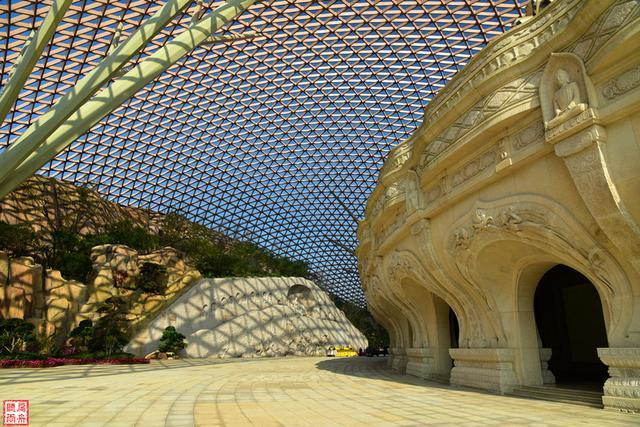

The Zen Temple on the ground is 112 meters long from north to south, 62 meters wide from east to west, and about 41.2 meters high internally. It covers three floors above the ground and houses a 7.5-meter-long statue of the reclining Buddha.


The reclining Buddha statue is cast in stainless steel, the skin is imitated with white marble, and the shape is based on the reclining Buddha statue in Cave 158 of Dunhuang Mogao Grottoes and its proportions. The reclining Buddha's face is kind and dignified, and it can also rotate slowly 360 degrees, symbolizing that the Buddha's eyes shine across the world and bless all living beings. Every day, a Buddhist meditation ceremony of "Ode to Lotus Buddha" and a multimedia performance show on the stage are held in Rulian Theater for about 30 minutes each. The ceremony performance combines lighting lanterns to pray for blessings, laying flowers to worship Buddha, and large-scale stage mechanical dance beauty visual art display to bring a breathtaking audio-visual feast to the audience.
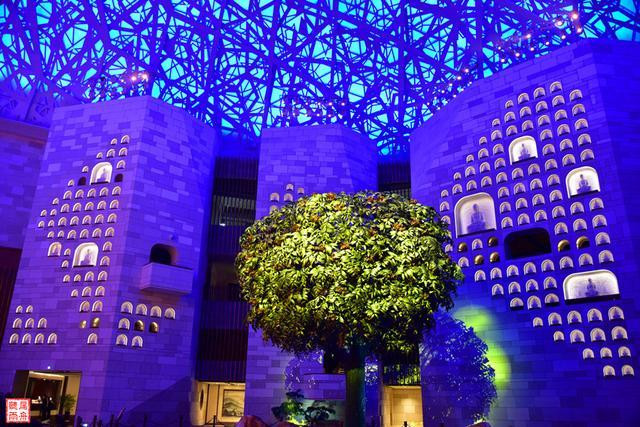




The underground part of the Buddha Top Tower covers the Thousand Buddha Hall and the Ten Thousand Buddha Corridor surrounding the Thousand Buddha Hall. The Buddhist hall is laid out according to the five directions and five Buddhas of the Huazang World, with the sacred tower of relics representing the Tathagata of the Vajra Realm as the center. In addition, the four Paramita Bodhisattva on the sacred tower, the four square Buddhas symmetrical around the ring corridor, and the sixteen Huimen Bodhisattva. The four photo Bodhisattva and the eight inner and outer offering Bodhisattva provide a three-dimensional presentation of the sacred scene of the Fourth Mandala Offering Meeting of the Vajra Realm of Buddhism.
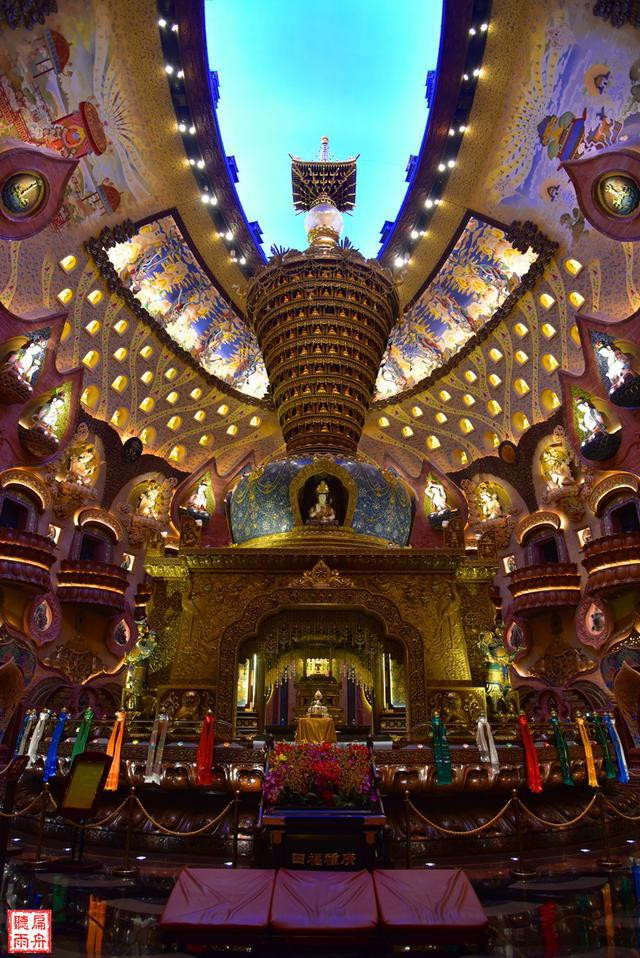

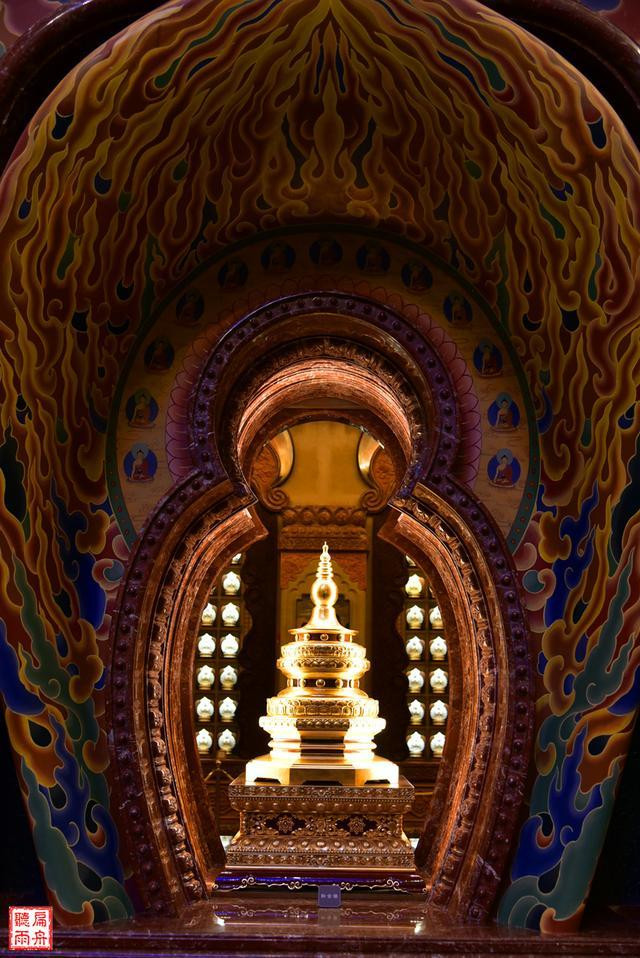


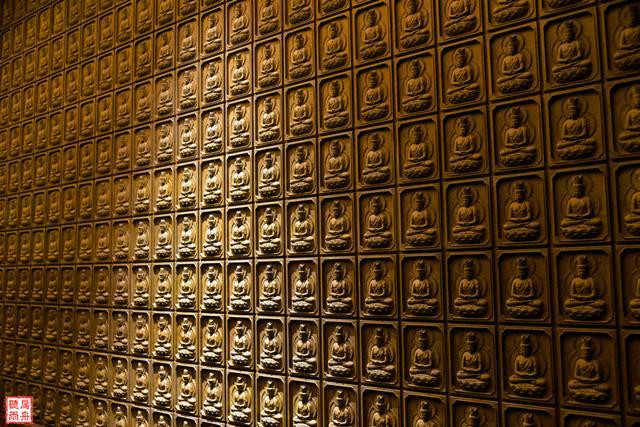
The relics collection palace is located 44 meters underground and houses the most precious treasure of the town palace, the true bone relic of the Buddha's roof.

The Fuding Tower next to the Fuding Palace is 88 meters high and has nine levels and four sides. It is a Tang Dynasty style building and one of the landmark buildings in the Fuding Holy Land.



Niutou Zen Cultural Park was built on the site of Hongjue Temple. Hongjue Temple is the birthplace of the Buddhist Niutou Sect. It was first built in the second year of Tianjian (503) of Emperor Wu of the Liang Dynasty in the Southern Dynasties. During the Anti-Japanese War, Hongjue Temple was burned by the Japanese army. The Hongjue Temple Tower, the core attraction of Niutou Zen Cultural Park, is 45 meters high and has seven levels and eight sides. It is the oldest existing brick tower with imitation wood structure in Nanjing. In 1957, the Hongjue Temple Pagoda was listed as a cultural relic protection unit in Jiangsu Province.

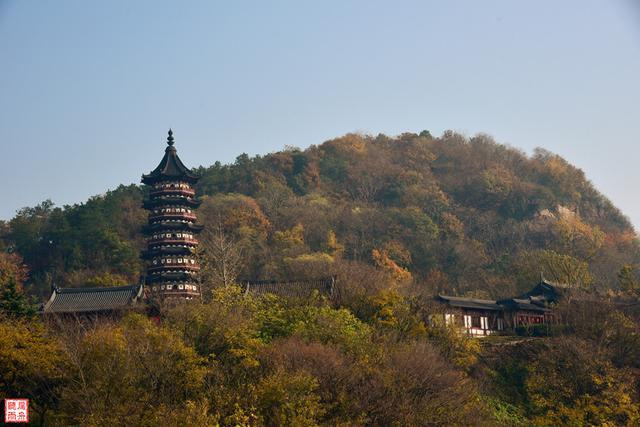


Foding Temple was named Foku Temple during the Tang Dynasty. It was the birthplace of the "Niutou Zen" before Zen. The existing building covers an area of 68 acres and imitates the Tang style. There are seven halls in total. It was rebuilt in 2015.






In addition to the main scenic spot, Niushou Mountain also has historical relics such as Yinlong Lake, Shiao Taoyuan, Zhenghe Cultural Park, the Second Mausoleum of the Southern Tang Dynasty, and the Yuefei Anti-Jin Fortress. Some have been built and some are still in the process of improvement. If you have enough time, you can take a sightseeing bus from the scenic area to slowly tour and taste it.






You may not know about Niushou Mountain when traveling to Nanjing, but I suggest you go there
